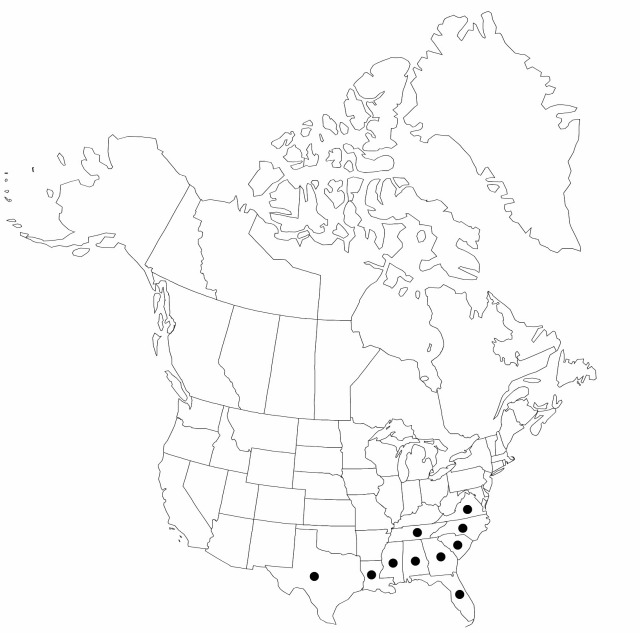Bulbostylis ciliatifolia
Rhodora 40: 391. 1938.
Herbs, annual or perennial, cespitose, slender. Culms to 40 cm, wiry. Leaves ¼–1/2 length of culms; sheaths stramineous to tan or brown, glabrous or scabrid on ribs; blades spreading to ascending, filiform, 0.5 mm wide, involute, margin glabrous or scabrid, abaxially glabrous or hirtellous. Inflorescences terminal, in simple or compound anthelae; scapes wiry, coarsely ribbed, glabrous or strumose-puberulent; longer primary involucral bracts with setaceous blades exceeding or exceeded by inflorescence. Spikelets red-brown to dark brown, lanceoloid to cylindric, longer than wide, 2–6 mm; fertile scales broadly ovate, keeled, 1–1.3 mm, apex acute, abaxially puberulent, midrib included or excurrent as mucro. Flowers: stamens 2–3; anthers narrowly oblong, 0.8–1 mm. Achenes mostly waxy gray, trigonous, obovoid, 0.8–1.5 mm, faces evenly papillate, finely rugulose or level; tubercle a small, dark, compressed-conic button.
Distribution

Ala., Fla., Ga., La., Miss., N.C., S.C., Tenn., Tex., Va., West Indies (Cuba).
Discussion
Varieties 2 (2 in the flora).
Selected References
None.
Key
| 1 | Plants annual, 10–20(–30) cm; scapes mostly 0.5 mm diam.; anthelae mostly simple, open; longest involucral bract shorter than inflorescence; fertile scales dark red-brown or dull brown. | Bulbostylis ciliatifolia var. ciliatifolia |
| 1 | Plants perennial, 15–40 cm; scapes mostly 0.5–0.7 mm diam.; anthelae mostly compound, open or dense; proximalmost involucral bract longer than inflorescence; spikelets red brown or pale brown. | Bulbostylis ciliatifolia var. coarctata |